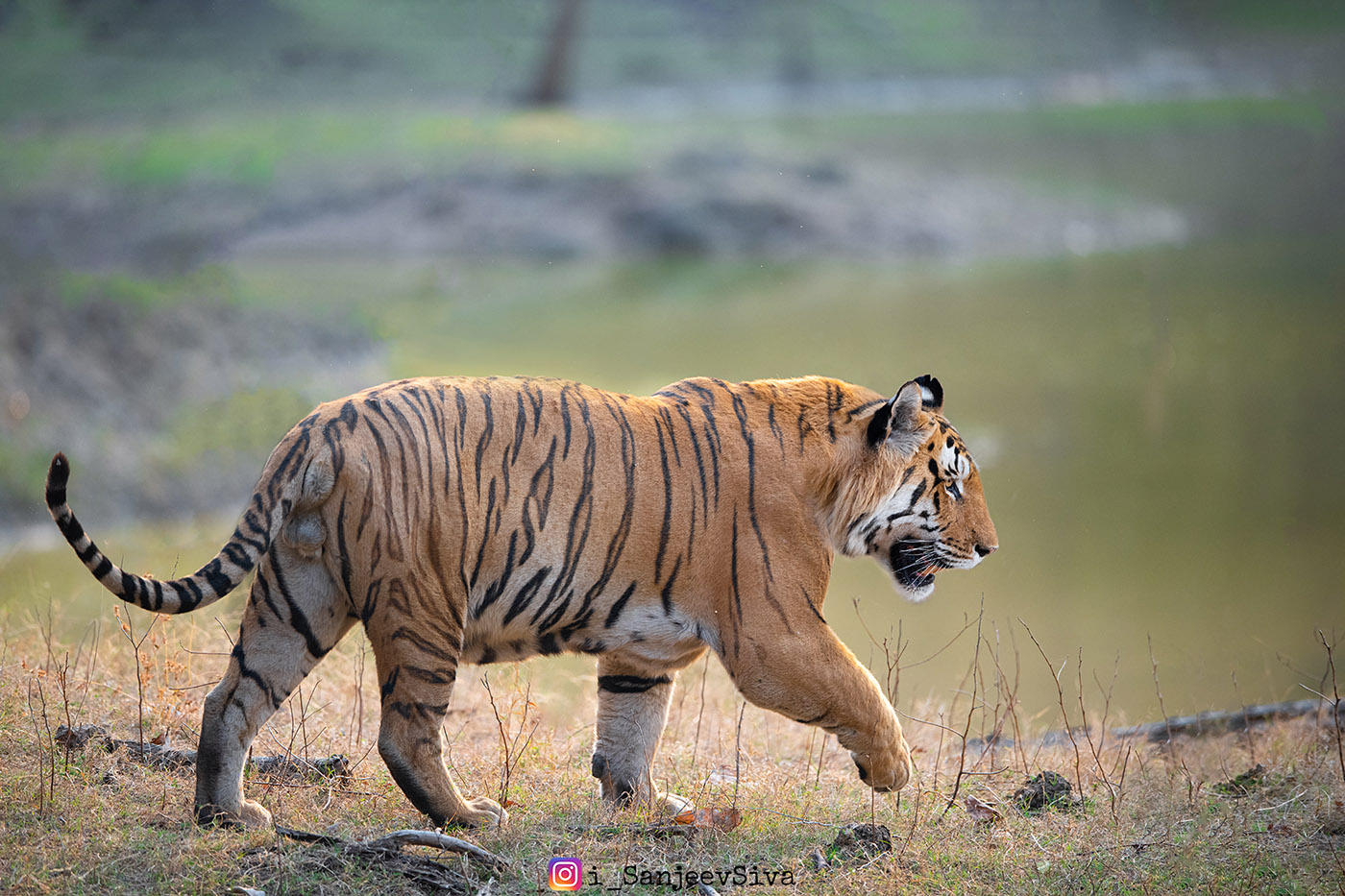The Czar of Pench
To war is leonine; to forgo is tigrine.
Legend has it that a woman named Raiyya Bai worshipped a tree in the middle of the forest of the modern-day Pench National Park. The husband who was vexed with his wife – Raiyya Bai’s unflinching endearment for the tree, axed the tree. The grief stricken Raiyya Bai committed suicide; the tree bled from its chopped trunk, and the blood continued to flow for many days, getting collected in a pool – a kassa – as it’s called in local language. The area, hence, came to be known as Raiyyakassa.
Hailing from this realm is a leviathan tiger who went on to become an interminable monarch, incontestable and unblemished, with paramount sovereignty, forging territories but forgoing wars. He was known as Raiyyakassa (also called Sula, named after a wine-glass-shaped stripe on lower-left-flank).
During 2008-09 period, Collarwali (the resident tigress) was ruling one of the most fertile territories of Pench TR with her second litter, fathered by an old male. Raiyyakassa, a young tiger had just entered the territory, challenging the queen and posing an imminent threat to her cubs.
He was fondly called ‘bade muh wala male’ – which translates to a male with a big head. He probably ousted the aging tigers, and soon started to expand.
The status naturalis of any pantherine entity is bellum internicinum – a bloody war, for establishing forma imperii – sovereignty. At the top of the game, the most powerful and most intelligent felids, tigers, while engaging in an insuperable hostility, renounce wars.
The eastern and the south-eastern portion of the park were ruled by a tiger known as BMW. His aspirations to expand never materialized wholly because he was already courting two tigresses – BadiMaa and her daughter Baghin-Nallah female. Collarwali, the other daughter of BadiMaa had ousted BadiMaa and occupied her territory much earlier.
Without a king to this territory, the kingdom squarely fell into the hands of the new male – Raiyyakassa. Raiyyakassa held the fort and even expanded the territory, into what would become one of the biggest territories ruled by any king.

Raiyyakassa and Collarwali went on to build the greatest empire ever, in probably, the entire history of tigers.
Collarwali gave birth to the first litter from Raiyyakassa, in October 2010; delivered a whopping 5 cubs – 4 females and 1 male; something that was never heard of in wild, till that point of time. Only a tigress in the prime of her health with access to the best prey could achieve such a feat. One of the females of this litter known as Pahad-Dev or Patdev tellingly delivered a litter of 5 cubs in December 2019.
With the animal receiving more protection, the tiger numbers increased, and the territories shrunk, relatively. Turf wars became common, and tigers waged bloody battles. National parks such as Tadoba, Kanha, Bandhavgarh, Ranthambore witnessed the rise and fall of kingdoms in a quicker succession.
However, thwarting every possible attack from intruders, his own sons, and his archnemesis - BMW, and expanding the empire at the same time, Raiyyakassa became a force to reckon with, holding onto the throne for the longest time – perhaps the longest ever by any tiger. The implications of his rule are far fletching.
It is generally believed that tigers don’t have a role in raising the cubs like the tigresses do, but they build an invisible fortress around the families, protecting them, and when offered the highest order of protection, a tigress promulgates her tribe, fluently. Collarwali and Raiyyakassa raised 19 cubs in 6 litters, the highest ever, in the wild (or even in captivity) – most of the tigresses in the wild cannot even raise 19 cubs in their entire lifetime. The stellar part of this story is that many of these 19 cubs survived to subadulthood.
In June 2018, after a decade of tranquility, Raiyyakassa was probably injured for the first time ever. His nose bled and the unblemished mighty king that never fought a war then on carried the mark of a warrior – the scar on the nasal cavity.
The mighty kingdom fell, and the reign almost ended. In the mid of October 2018, the same male that had fought with him banished Raiyyakassa, out from the territory that Raiyyakassa built and augmented.
Raiyyakassa moved over to another territory, where he lived the life of a king in exile, before finally breathing his last, on 20th July 2021.
His son, the mighty L-mark, from the litter of Langdi tigress, has taken over his territory. He supposedly fathered the latest (and perhaps the last) litter of Collarwali but he couldn’t provide her the protection like his father did. One of the cubs of this litter was killed by a subadult of Langdi (half-brother of L-mark).
Raiyyakassa was a league of his own. He solemnly renounced wars, was an epitome of a tiger’s dominion, an embodiment of all that symbolized stability, power and sovereignty. His authority was visible in his demeanour which was unequivocally aristocratic with a flux of dapper and suave movements – the czar of Pench in the truest sense.
